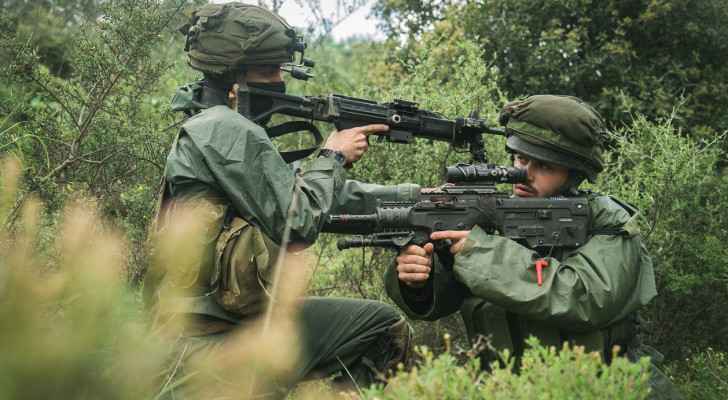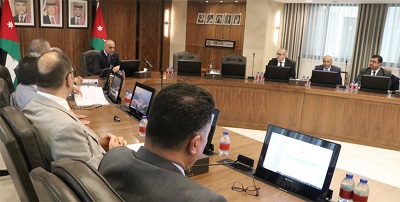ACOR marks history with first in-person underwater archaeological survey in the Dead Sea
The Jordan Times
AMMAN — The American Centre of Research (ACOR) hosted a lecture on Monday by ACOR’s Executive Director Pearce Paul Creasman, discussing the recent season of survey and exploratory excavation at the Dead Sea site of Kallirhoe (modern ‘Ain ez-Zara), which took place in fall 2023.
In collaboration with the Department of Antiquities, ACOR conducted an excavation in Kallirhoe during the fall months of October and November 2023, focusing precisely on the port that served the citadel of Machaerus (Mukawer). The port dates back to at least the Hasmonean period (1st century BC) and is depicted on the Madaba map (6th century AD).
The illustrated lecture described the archaeological work performed both on land and underwater to enhance the understanding of the site, including the first-ever in-person underwater survey in the Dead Sea. This mission presented logistical challenges and encountered unexpected conditions.
The rejuvenating springs of the Dead Sea have been known for thousands of years. Early kingdoms of the area, such as the Nabataeans and Hasmonaeans, frequented the Dead Sea area, including Kallirhoe, or modern-day ‘Ain ez-Zara, to seek treatments at these thermal springs, which are located on the Eastern side of the Dead Sea.
“We don’t believe that there were any ancient roads on the Eastern side of the Dead Sea,” explained Creasman. “To navigate anywhere, people had to take a boat. Due to the harsh topography, there were limited harbours. Therefore, when people discovered one of those, especially with freshwater sources, they tended to revisit them over the centuries. You can still visit these places today, as there are public beaches.”
This harbour is most famously known for having served the citadel of Machaerus (or Mukawer), connecting it to the rest of the world. Visitors would arrive by boat, due to the lack of ancient roads.
“Thanks to the King’s visit last year and the funding from the Jordanian government, we were able to collaborate with the Department of Antiquities and revisit the site,” Creasman said. “We conducted general cleaning, examined the site, gained further insights of the harbour’s zone and documented the various archaeological complexes.”
Creasman explained that he decided to concentrate his efforts on the hill of the harbour, which had been previously surveyed by the Department of Antiquities in 2012 (primarily through remote-sensing survey techniques). During these surveys, they discovered five “features” that were not fully identified due to being located under the salted water.
“So, we decided to go down and take a closer look.” Creasman said. “Although we are uncertain about the location of the ancient water line, we collected samples for future study to determine the fluctuations in water levels over time. We are aware that the Dead Sea has changed significantly, possibly shifting up to 300-400 metres over the last 10,000 years.”
“After collecting the samples, it was time to dive underwater,” Creasman continued. “There are no manuals for diving in the Dead Sea. The most crucial requirement is obviously weight. The average American would need around 45 kilogrammes attached to their person in order to sink and perform scuba-diving in the Dead Sea.”
The divers also needed special “full-face” masks, as even one drop of the saltwater in the eyes could cause serious injuries. “The most important role in this excavation was held by the person standing on the shoreline with a clean washcloth, ready to clean our faces as soon as we emerged from the water,” Creasman emphasised.
While underwater, the divers encountered stunning salt cliffs, some of them towering over ten metres tall. They also faced dangerous diving phenomena, particularly when reaching 30 metres down. At these depths, the water’s compression of the air in their equipment jackets created a sensation of being pulled downward.
“It was scary,” recalled Creasman. “You immediately drop, like a rock. With nearly 40 kilogrammes of weight on you, sinking rapidly requires a quick reaction … It took all of my energy and awareness to ascend to a safe level. Diving in the Dead Sea can be truly dangerous for those lacking expertise,” he warned, though he added that, despite the risks, it was a wonderful experience.
They conducted one by one metre excavations, underwater. These excavations mark the first time anyone has ever done archaeology underwater anywhere on the Dead Sea.
The five features discovered in 2012 were analysed: Some were identified as natural phenomena, while others are salt cliffs. However, some of these features, particularly those dating back to the ancient Neolithic era, remain unidentified. “We hope to uncover more about these during future excavations,” concluded Creasman.
Pearce Paul Creasman, ACOR’s executive director since February 2020,is a renowned expert in Middle Eastern and North African heritage, archaeology and environment. With a PhD and Master’s degrees in nautical archaeology from Texas A&M University, he has led numerous expeditions and research projects across the region. Creasman has over 100 publications to his name and has received recognition from esteemed institutions such as the White House’s Office of Science and Technology.
Latest News
 “Israel” withdraws main infantry brigade from Gaza
“Israel” withdraws main infantry brigade from Gaza 'Sinwar Above Ground': Hamas official's revelation shocks Israeli Occupation
'Sinwar Above Ground': Hamas official's revelation shocks Israeli Occupation US president signs bill to provide new aid for Ukraine
US president signs bill to provide new aid for Ukraine Prime minister directs government to support IEC ahead of upcoming elections
Prime minister directs government to support IEC ahead of upcoming elections Parliamentary elections for 20th Lower House to be held on September 10 – IEC
Parliamentary elections for 20th Lower House to be held on September 10 – IEC
Most Read Articles
- King, French president discuss regional developments
- More than 100 arrested at US university pro-Palestinian protests
- Senior Hamas official says movement is “awaiting response” in ceasefire negotiations
- Irish foreign minister visits Palestinian refugee camp in Amman, vows support to UNRWA
- Jordan remembers Queen Zein
- Ahead of feared Rafah invasion, Palestinians mourn bombardment dead
- US says downed Houthi anti-ship missile, four drones
- JAF carries out six more airdrops of aid into Gaza
- Cassation Court upholds over 3-year sentence for drug dealer
- Jordan completes human rights review before council’s evaluation Jordan completes human rights review before council’s evaluation